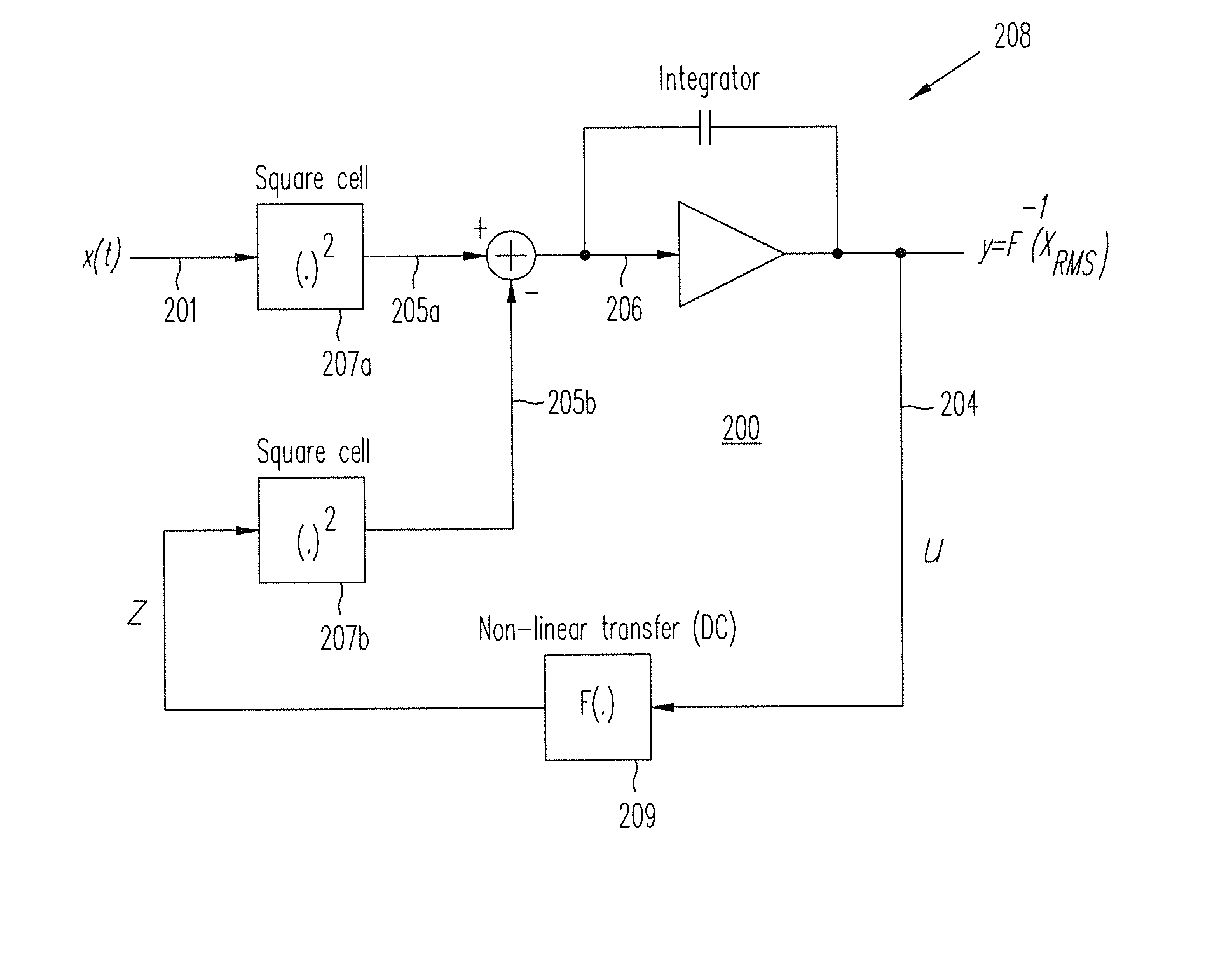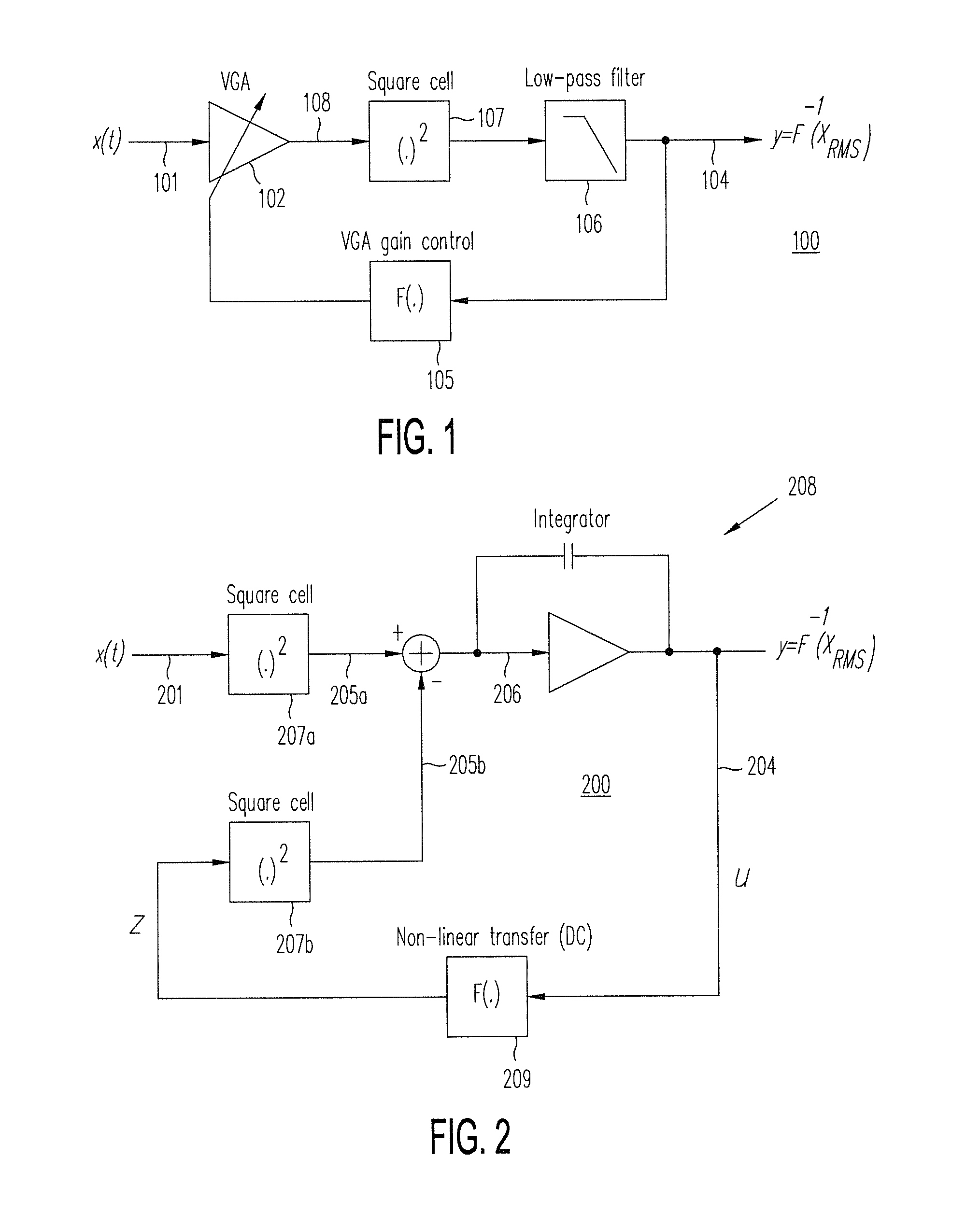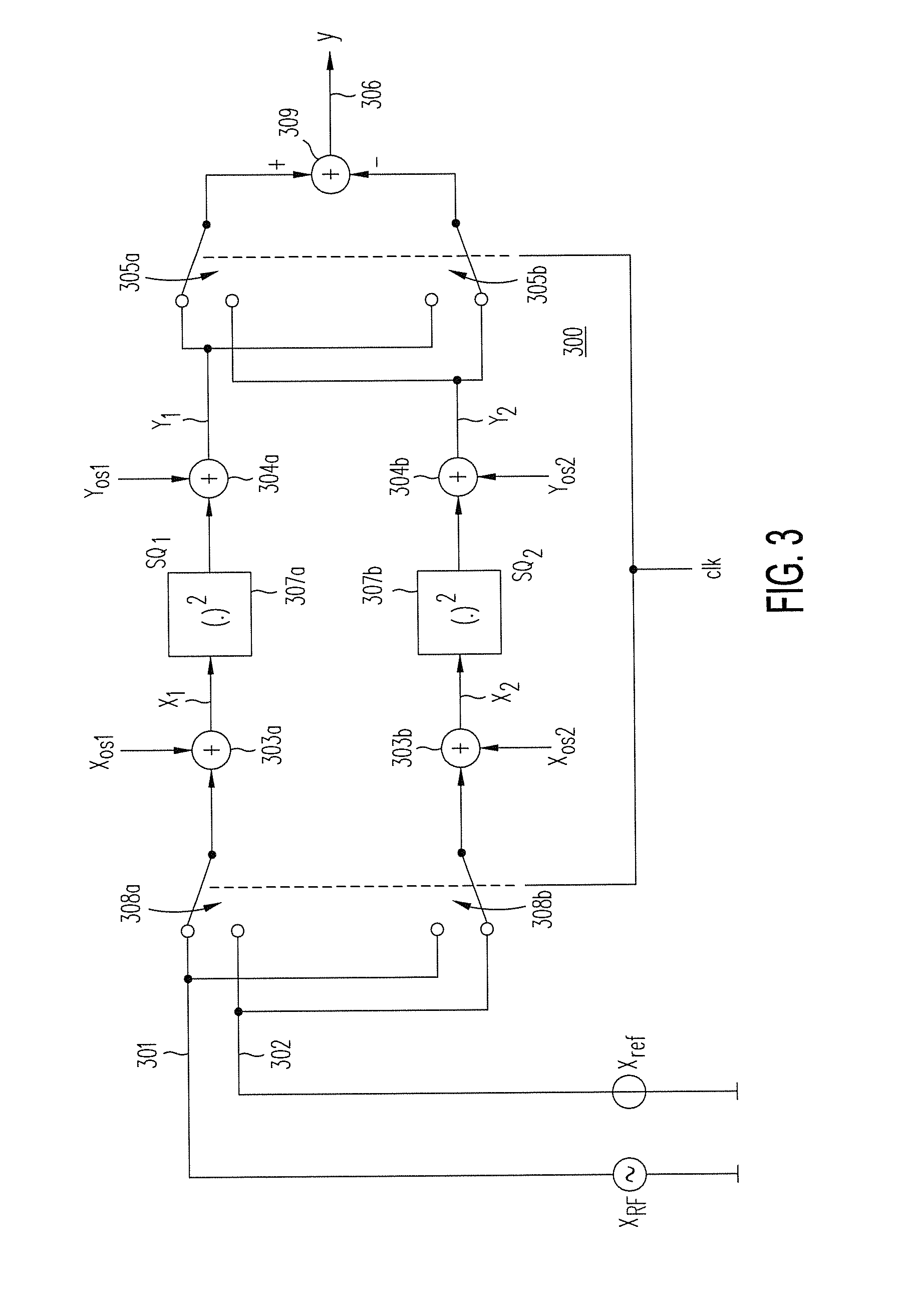High-frequency RMS-DC converter using chopper-stabilized square cells
a chopper-stabilized, square cell technology, applied in the direction of power measurement by using square-law characteristics, electric/magnetic computing, instruments, etc., can solve the problems of reducing the maximum operating frequency of the rms power detector, reducing the maximum operating frequency, and not scaling well, so as to reduce the required device size, and eliminate the effect of offs
- Summary
- Abstract
- Description
- Claims
- Application Information
AI Technical Summary
Benefits of technology
Problems solved by technology
Method used
Image
Examples
Embodiment Construction
[0042]FIG. 3 illustrates chopper-stabilized square cell 300, in accordance with one embodiment of the present invention. As shown in FIG. 3, chopper-stabilized square cell 300 includes input signal 301 and reference signal 302, which are each selectively provided by either switches 308a or 308b to square cell 307a or square cell 307b, depending on the state of switches 308a and 308b. At any given time, if switch 308a is set to receive input signal 301, switch 308b is set to receive reference signal 302. Alternatively, if switch 308a is set to receive reference signal 302, switch 308b is set to receive input signal 301. As each square cell has internal offsets that add to either the input signal or the output signal, these offsets are represented by adders 303a and 303b that add offsets XOS1 and XOS2 to the signals provided to square cells 307a and 307b, respectively, and adders 304a and 304b that add offsets YOS1 and YOS2 to the output signals of square cells 307a and 307b, respecti...
PUM
 Login to View More
Login to View More Abstract
Description
Claims
Application Information
 Login to View More
Login to View More - R&D
- Intellectual Property
- Life Sciences
- Materials
- Tech Scout
- Unparalleled Data Quality
- Higher Quality Content
- 60% Fewer Hallucinations
Browse by: Latest US Patents, China's latest patents, Technical Efficacy Thesaurus, Application Domain, Technology Topic, Popular Technical Reports.
© 2025 PatSnap. All rights reserved.Legal|Privacy policy|Modern Slavery Act Transparency Statement|Sitemap|About US| Contact US: help@patsnap.com



